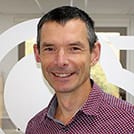Post-campaign analysis report template
Clearly collect, analyze and evaluate the success of your marketing campaigns across channels
How will this template help me and my business?
The template is aimed at helping you collect your campaign results while analyzing and evaluating the effectiveness of your campaign, broken down by segmentation, messaging, and channels. The report is useful in understanding how each channel and process has contributed to the wider goals of the campaign and longer-term business goals, what channels were less effective and what improvements and contingencies need be considered next time.
Who is this template for?
This post-campaign report template has been created to help marketers brief senior management, clients, and colleagues on campaign results. It’s in a Microsoft Word format to make it easy to amend for your needs.
Agencies and business members with a white labelling licence can rebrand this template to present to clients by double-clicking into the header area and replacing our logo with their own.
How is the template structured?
The two sections in the post-campaign analysis report template are:
- Executive summary: A brief summary of the performance of the main campaign structured around 10 key areas covering all aspects of the campaign. For a quick, high-level review just complete this part.
- Campaign execution: More detailed review of content, campaign waves and channel performance and how it has contributed to campaign goals.
Each section prompts talking points and gives recommendations on what to include and analyze to give a detailed report. Not all sections will be applicable if you haven’t used every channel.
Resource Details
- Authors: Dr. Dave Chaffey and Amelia Cooper
- Format: Microsoft Word document template
About the authors
Dr. Dave Chaffey
 Dave is co-founder of Smart Insights and creator of the Smart Insights RACE planning framework. For his full profile, or to connect on LinkedIn or other social networks, see the About Dave Chaffey profile page on Smart Insights. Dave is author of 5 bestselling books on digital marketing including Digital Marketing Excellence and Digital Marketing: Strategy, Implementation and Practice. In 2004 he was recognized by the Chartered Institute of Marketing as one of 50 marketing ‘gurus’ worldwide who have helped shape the future of marketing.
Dave is co-founder of Smart Insights and creator of the Smart Insights RACE planning framework. For his full profile, or to connect on LinkedIn or other social networks, see the About Dave Chaffey profile page on Smart Insights. Dave is author of 5 bestselling books on digital marketing including Digital Marketing Excellence and Digital Marketing: Strategy, Implementation and Practice. In 2004 he was recognized by the Chartered Institute of Marketing as one of 50 marketing ‘gurus’ worldwide who have helped shape the future of marketing.
Amelia Cooper

Amelia Cooper is Head of Content at Smart Insights. She is responsible for managing the paid member content library and e-learning resources, as well as strategic planning to ensure customers get the most from their memberships. She is a University of Southampton and the Chartered Institute of Marketing graduate with over 7 years’ experience in digital marketing, specializing in content marketing.

 Paid Membership is required
Paid Membership is required








